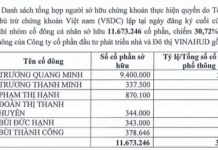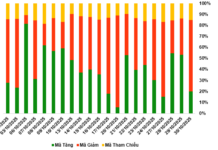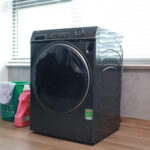When it comes to familiar electronic devices and home appliances, one cannot overlook the washing machine. Washing machines support cleaning clothes, saving time and effort. Operating a washing machine is quite simple, mainly through the electronic control panel of the device.
However, there are certain considerations when using this appliance that not everyone is aware of. Here is an example. When putting clothes in the washing machine, should they be dry or wet?

Illustration
Experts in washing machines, as well as manufacturers and distributors, state that proper operation directly impacts the efficiency and longevity of the appliance. To find the answer, users need to understand the specifications of their washing machine.
Expert Advice
Many users believe that putting dry or wet clothes in the washing machine is equally reasonable. After all, clothes will be rinsed, treated with detergent, and spun regardless. However, experts advise that it is best to put dry clothes into the washing machine to avoid excessive water retention or saturation.
This is affirmed by the website Brightside, which also mentions: “Putting wet clothes in the washing machine is a harmful mistake that can lead to damage and create an environment for bacteria to thrive inside the drum. ‘Moisture is the perfect environment for mold to grow, making clothes smell unpleasant even after washing. That’s why you shouldn’t put wet clothes or sweaty sportswear in the washing machine and leave them there for too long.’

It is recommended to put dry clothes into the washing machine (Illustration)
Therefore, Brightside suggests that if you don’t intend to wash the clothes immediately and they happen to be soaked or saturated with sweat, it is best to wring them out or hang them to dry before putting them in the washing machine.
The recommendation to put dry clothes into the washing machine is also based on the weight specifications stated on each appliance. Specifically, according to Global Weighing News, the numbers 7kg, 8kg, and 10kg on washing machines indicate the dry weight of clothing.
Once the dry clothes are placed in the drum, the machine will add a certain amount of water before starting the washing process. Hence, putting wet clothes in the machine may overload it, making it heavier than the specified weight, and potentially leading to inefficient operation and long-term damage.

The weight indicated on the washing machine also represents the weight of dry clothes (Illustration)
In addition to putting dry clothes in the washing machine, users should also avoid overstuffing the machine. Aim to fill the drum to about 70-80% or 2/3 of its capacity. This allows sufficient space for the drum to function effectively.
Here are some measurement guidelines for dry laundry provided by Global Weighing News: For instance, 1kg of laundry is equivalent to 1 shirt plus 2 pairs of thick denim, or 5 shirts, or 2 bath towels; 5kg of laundry would be 5 shirts plus 5 pairs of thick denim, or 25 shirts, or 10 bath towels; 7kg of laundry is 7 shirts plus 7 pairs of thick denim, or 35 shirts, or 14 bath towels, and so on.
For bulkier items, such as blankets, curtains, and bed linens, these items require more space in the washing machine to be cleaned effectively. Therefore, users should balance the load and avoid overloading the machine with too many items in one cycle.

Illustration
Other Considerations When Using a Washing Machine
Place the Machine on a Level, Ventilated Surface
Ensure that the washing machine is placed on a level surface to prevent excessive noise during operation. It should also be located in a well-ventilated area, avoiding damp places or direct sunlight. Damp locations like bathrooms or toilets can cause electrical damage, such as short circuits or rusted components. Prolonged exposure to direct sunlight can also reduce the lifespan of the appliance.
Use the Correct Amount and Type of Detergent
Detergents suitable for washing machines include powder, liquid detergents, or multi-purpose detergent pods. It is essential to use the right amount—not too much or too little—and to choose the appropriate type for your specific machine. This ensures effective cleaning and optimizes the performance and longevity of the appliance.

Illustration
Inspect Clothes Before Washing
Before putting your clothes in the washing machine, carefully check and ensure that there are no foreign objects, especially potentially hazardous ones, in the pockets or folds of your garments. This includes items such as paper, metal objects, sharp items, or lighters.
For clothes with zippers, make sure they are fully unzipped, and any rolled-up items are unrolled and shaken out. Sleeves and pant legs should be treated similarly. Delicate or stretchy fabrics should be placed in a separate laundry bag for added protection.

Illustration
Finally, don’t forget to schedule regular inspections, cleaning, and maintenance for your washing machine. Typically, cleaning should be done once a month, and maintenance every six months.








































